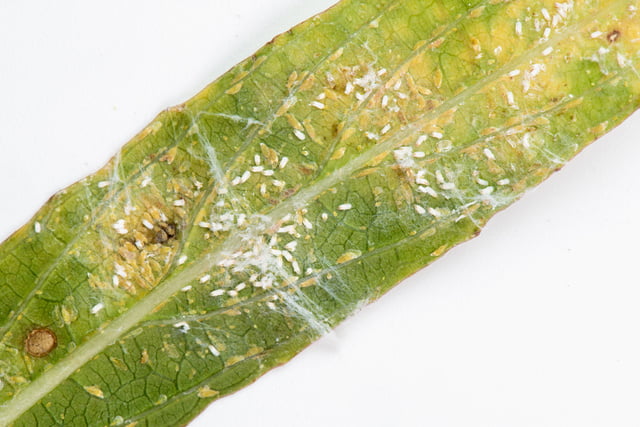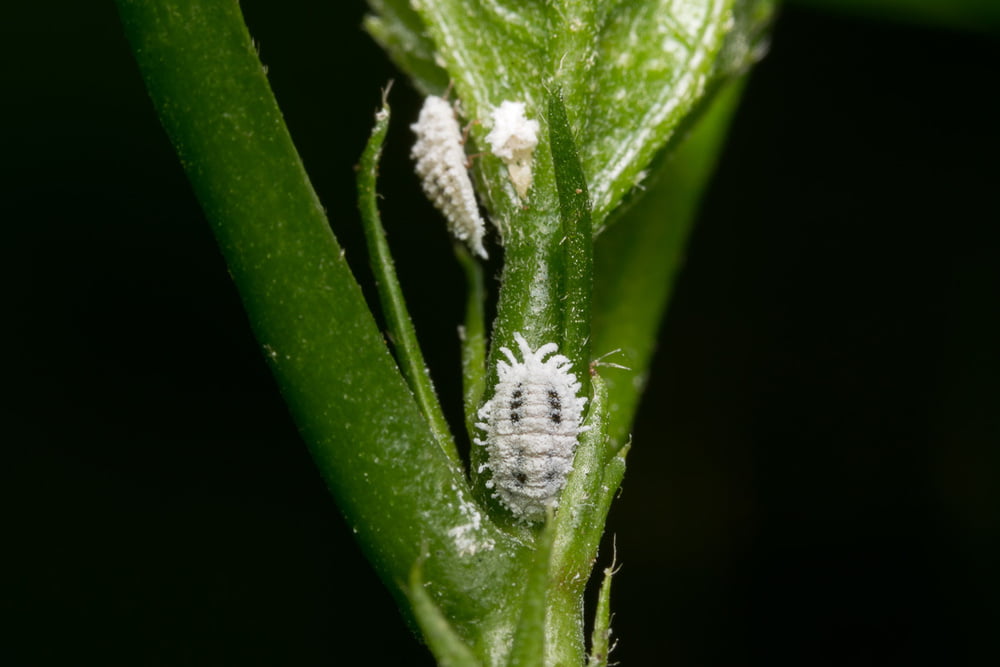Mealybugs belong to the scale insects and are also called mealybugs because of the waxy substance they excrete. We explain how you can recognize mealybugs and how to fight them.
Mealybugs (Pseudococcidae) damage plants in several ways at once: they suck out plant sap and release poison into the plant. In addition, they secrete honeydew on the leaves, which provides an ideal breeding ground for fungal diseases.
Mealybugs are a serious threat to plants: If the infestation is not treated, it can cause the plant to die.
- Recognizing mealybugs
- Plants at particular risk
- Prevent mealybug infestation
- Control mealybugs naturally
- Means against mealybugs
- Control root lice
- Beneficial insects against mealybugs

Contents
Recognize mealybugs
You can tell that your plants are infested with mealybugs by a variety of signs:
Honeydew on the leaves
Leaves turn yellow and curl up
White webs
Leaves fall off
Some species of mealybugs reside almost exclusively in the roots of plants and are therefore called root aphids. You can recognize an infestation by the white greasy marks on the inside of the flower pot.
Control mealybugs
If you find that mealybugs have infested your plants, quick action is required. Due to the dual damage of sucking and poison, mealybugs pose a tremendous threat to plants. Houseplants with fleshy, hard-leafed or herbaceous leaves are particularly at risk, such as
- Poinsettia
- Rubber plant
- Elephant foot
- Orchid
- Yucca palm
- Money tree
- Aloe vera
Outdoors, mealybugs infest hydrangeas, olive trees, lemon trees, oleander and boxwood.
Mealybugs are especially dangerous for orchids. Usually the cause here is that already infested plants are purchased and integrated into the healthy stock, where the mealybugs can spread unhindered. Mistakes in care can also provoke a mealybug infestation. Furthermore, mealybugs also often infest hydrangeas.
Mealybugs: prevent infestation
To prevent your plants from being infested with mealybugs, you can take preventative measures:
When buying new plants, look for signs of mealybug infestation and buy only healthy plants.
Don’t put new plants with the rest of your plants right away; quarantine them for 14 days first.
The right location can also help repel mealybugs: A bright location with plenty of light is ideal.
Heating air weakens plants and makes them more susceptible to mealybugs. Therefore, do not position your plants directly above the heater and also ventilate regularly.
Avoid fertilizers that contain high levels of nitrogen: it encourages mealybug infestation.
Control mealybugs naturally
If it does happen and you find that your plants are infested with mealybugs, you can control them naturally.
Separate the infested plants from their healthy neighbors and move them to a separate room that should be as bright and cool as possible.
Thoroughly remove all affected plant parts.
Apply an agent to control mealybugs*. You can buy this in stores or make it yourself.
Make your own remedy against mealybugs
Although some insecticides are commercially available to control mealybugs, these remedies are highly toxic and can be dangerous to humans, especially pregnant women, children or the elderly. You can also easily make a home remedy for mealybugs yourself:
Mix 15 milliliters of curd soap, 15 milliliters of methylated spirits and one liter of water.
Spray the mixture directly on the infested plants.
Repeat this every two days.
Also, repot the plants as soon as possible.
Orchids should not be sprayed, but the delicate leaves are better brushed carefully with the mixture.
Methylated spirits work against mealybugs by penetrating the body shell of the pests and killing the mealybug. However, it is also too aggressive pure for most plants and must therefore be diluted.
Cacti are an exception: their skin is so tough that you can apply the spirit pure if you find that your cacti are infested with mealybugs.
Control root lice
If you notice white smear marks on the inside of flower pots when repotting, your plant is probably infested with root lice. Now you need to act quickly:
Carefully free the plant’s roots from soil and substrate.
Clean the roots thoroughly under a direct, strong stream of water.
Do not dispose of the infested substrate in the organic waste or compost heap under any circumstances, but in the residual waste.
Sterilize the fresh substrate before planting the plants: Spread the soil on a baking tray and heat it for 20 minutes at 200 °C in the oven. Alternatively, you can heat the soil for ten minutes on the highest setting in the microwave.
Disinfect the flower pot thoroughly.
Now plant the plant in the sterilized soil in the disinfected flower pot.
Fight mealybugs with beneficial insects
If the infestation is severe, you can also use predators to control mealybugs naturally.
Lacewings* decimate a mealybug population within two weeks, but also often miss individual pests, so the infestation persists.
If you want to control mealybugs on houseplants, the Australian ladybug is in demand: it needs a temperature of at least 20 °C and is therefore mainly used to control mealybugs indoors.
Also particularly suitable for use on houseplants are ichneumon wasps.
The waxy traces left by the animals have earned them the name mealybugs, and the pests are also known as root lice to plagued plant lovers. Woolly aphids occur worldwide, with the individual species differing in the length of the woolly pubescence, among other things.
Woolly aphids are dangerous to houseplants and can quickly kill the plant. However, with a little attention and our home remedies, you can fight mealybugs naturally.


